Practice Manual
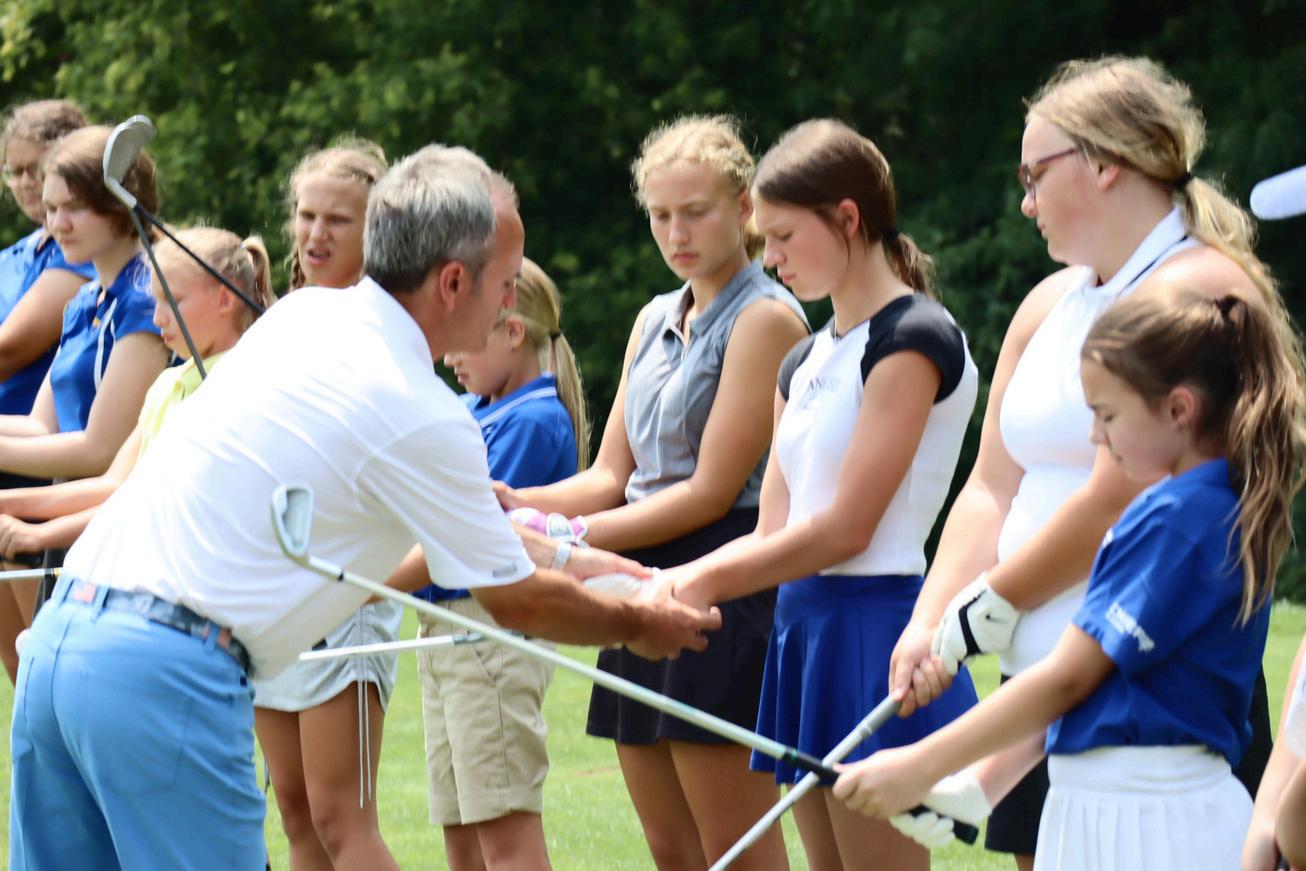
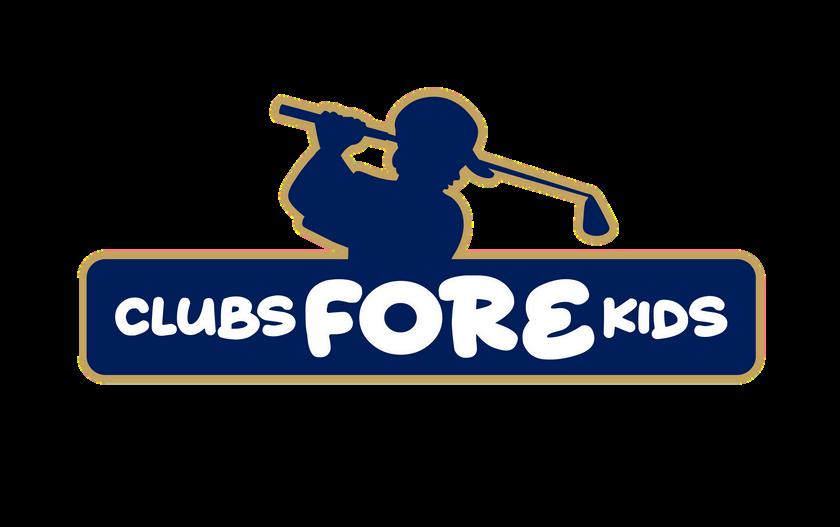
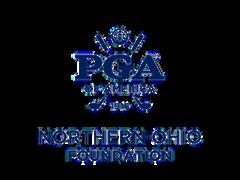




Welcome Message
About the NOPGA Section Foundation
Meet Our Team Rules
Warm-Up, Pre-Shot Routine, & The First Tee
Putting Chipping Bunkers
Full Swing
DCP, PGA Jr. League, NOPGA Junior Tour
Contact Us
Golf is not just a sport; it's a way of life It teaches us discipline, perseverance, and respect, both on and off the course. Through the Clubs Fore Kids program, we are thrilled to provide you with this invaluable booklet filled with tips, drills, and rules crafted by our esteemed Northern Ohio PGA professionals and associates Within these pages, you will discover a wealth of knowledge aimed at sharpening your skills and deepening your understanding of the game. From mastering your swing to navigating the complexities of course etiquette, each drill and tip is designed to help you unlock your full potential as a golfer
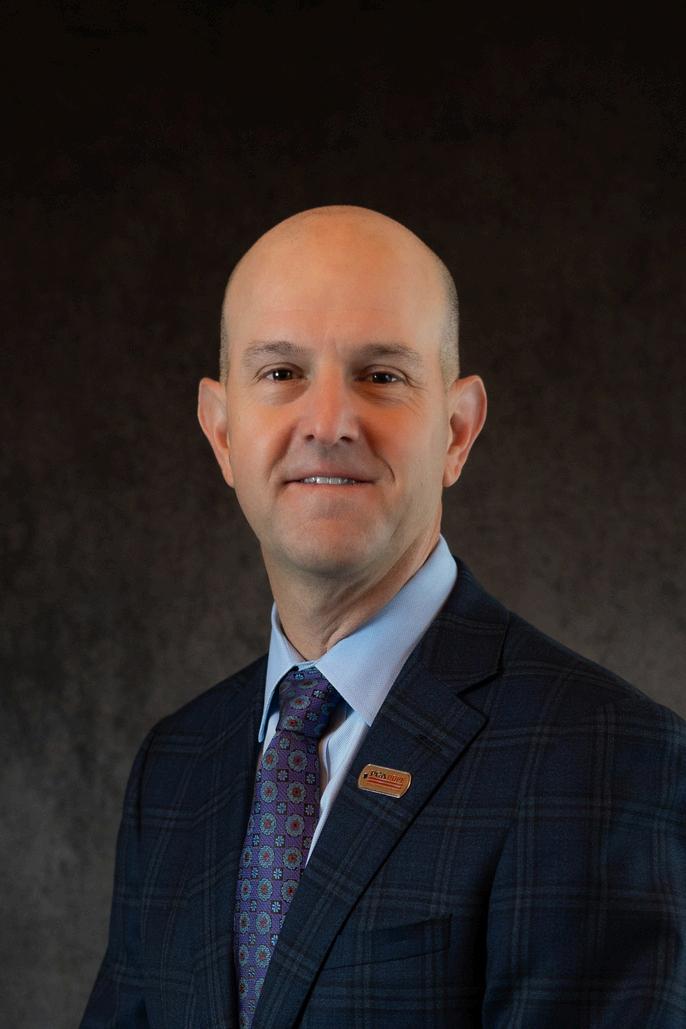 David Griffith Executive Director
David Griffith Executive Director
To the coaches, thank you for your tireless dedication to nurturing the next generation of golfing talent Your guidance and support are invaluable in shaping the future of our sport To the junior golfers, remember that every swing, every putt, and every moment on the course is an opportunity for growth and improvement. Embrace the challenges, learn from your mistakes, and always play with integrity and sportsmanship.
As you embark on this journey, know that the Northern Ohio PGA Section Foundation is here to support you every step of the way Whether you're vying for championships or simply enjoying a leisurely round with friends, may the game of golf bring you endless joy and fulfillment. Thank you for being a part of our golfing community!
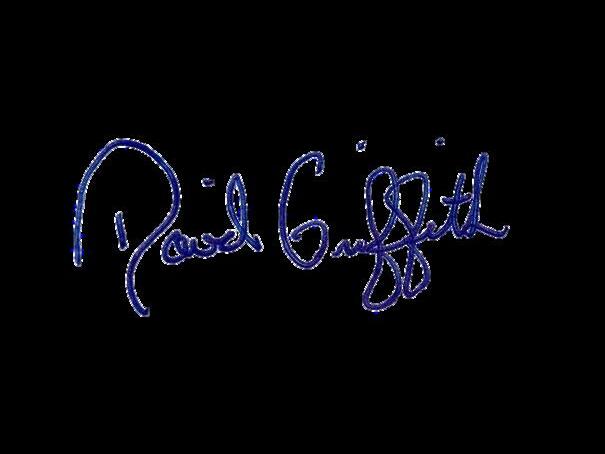
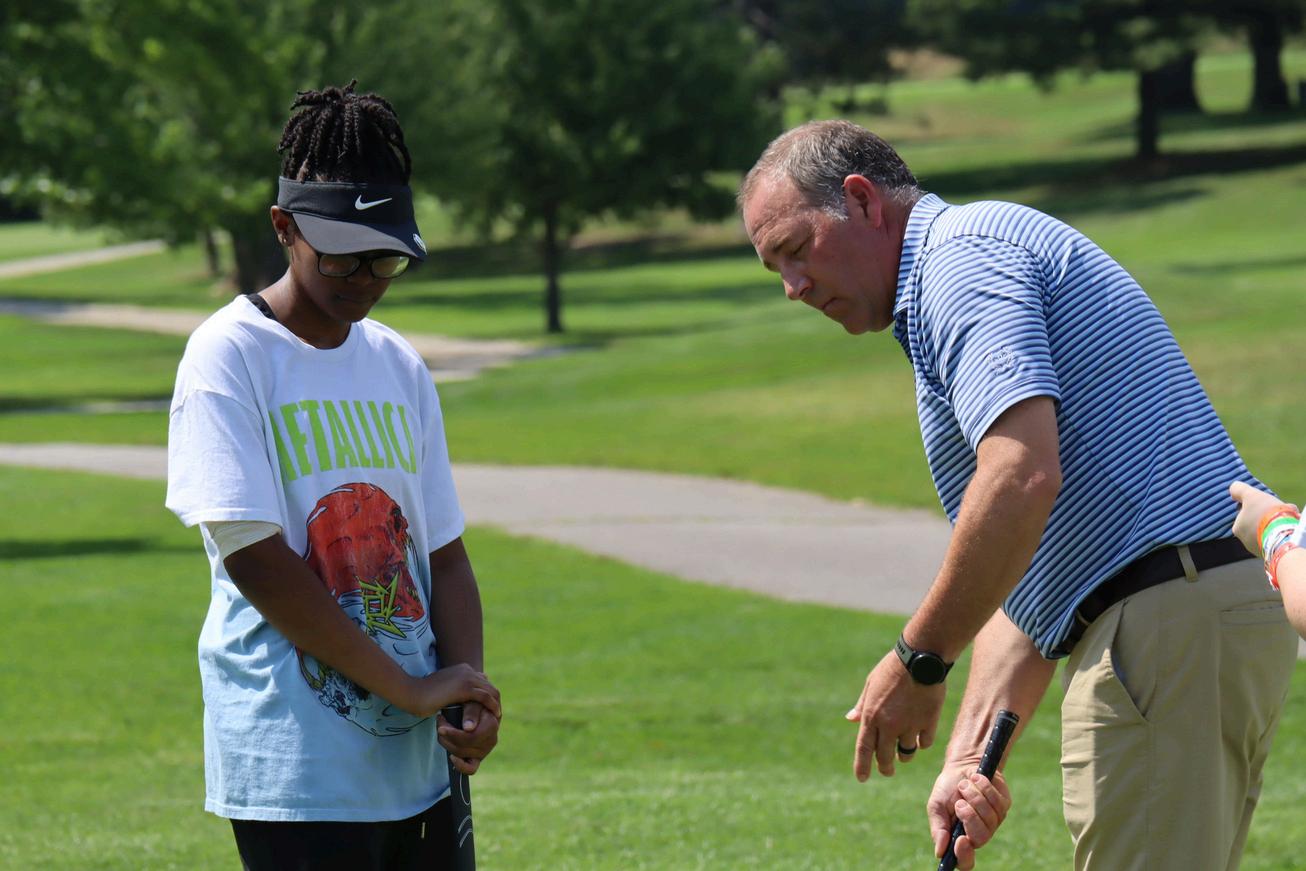
The Northern Ohio PGA Section Foundation is a 501(c)(3) of the Internal Revenue Code. It is a non-profit organization established to support the Northern Ohio community, with a focus on junior golf, education and scholarships, and charities in the area. The Northern Ohio PGA Section Foundation falls under the direction of the Northern Ohio Section of the PGA of America, a non-profit organization of over 475 men and women PGA professionals serving as experts in business and the game of golf.
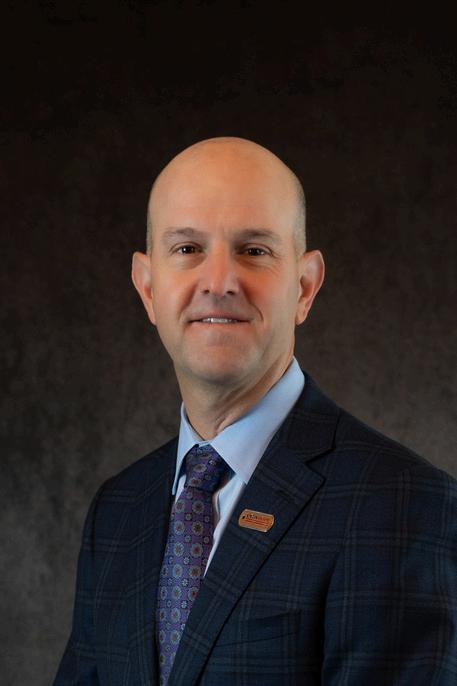

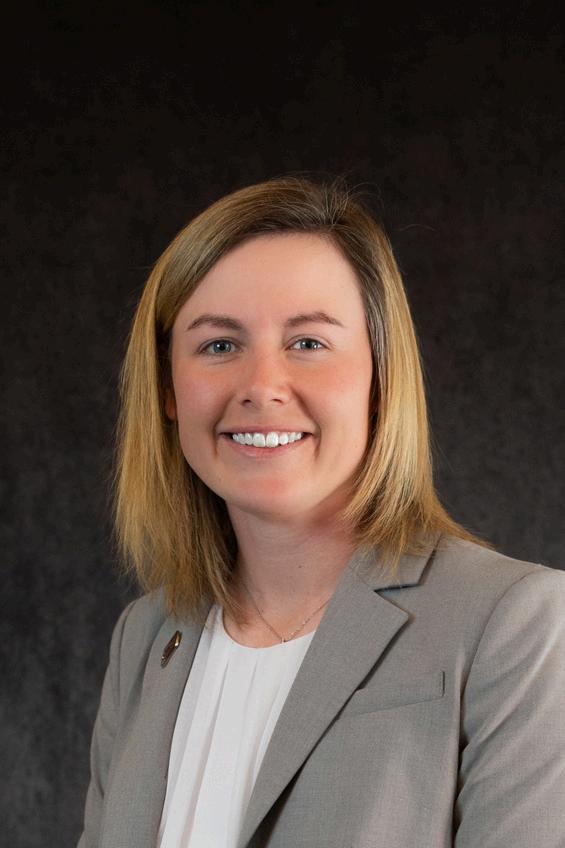

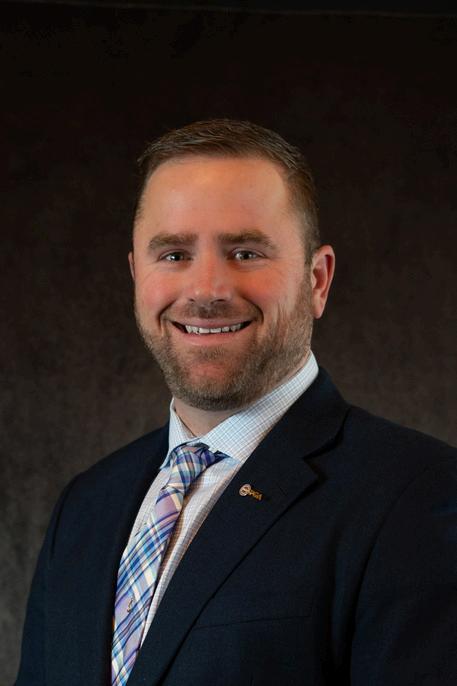
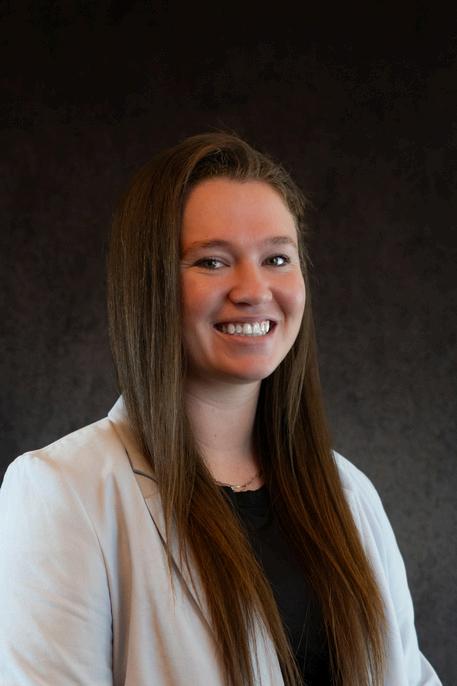 David Griffith
Danielle Monas Haleigh Gray
L Matt Rutland, PGA Executive Director Director of Operations DirectorofCompetitions
Foundation Director Junior Golf Coordinator
David Griffith
Danielle Monas Haleigh Gray
L Matt Rutland, PGA Executive Director Director of Operations DirectorofCompetitions
Foundation Director Junior Golf Coordinator
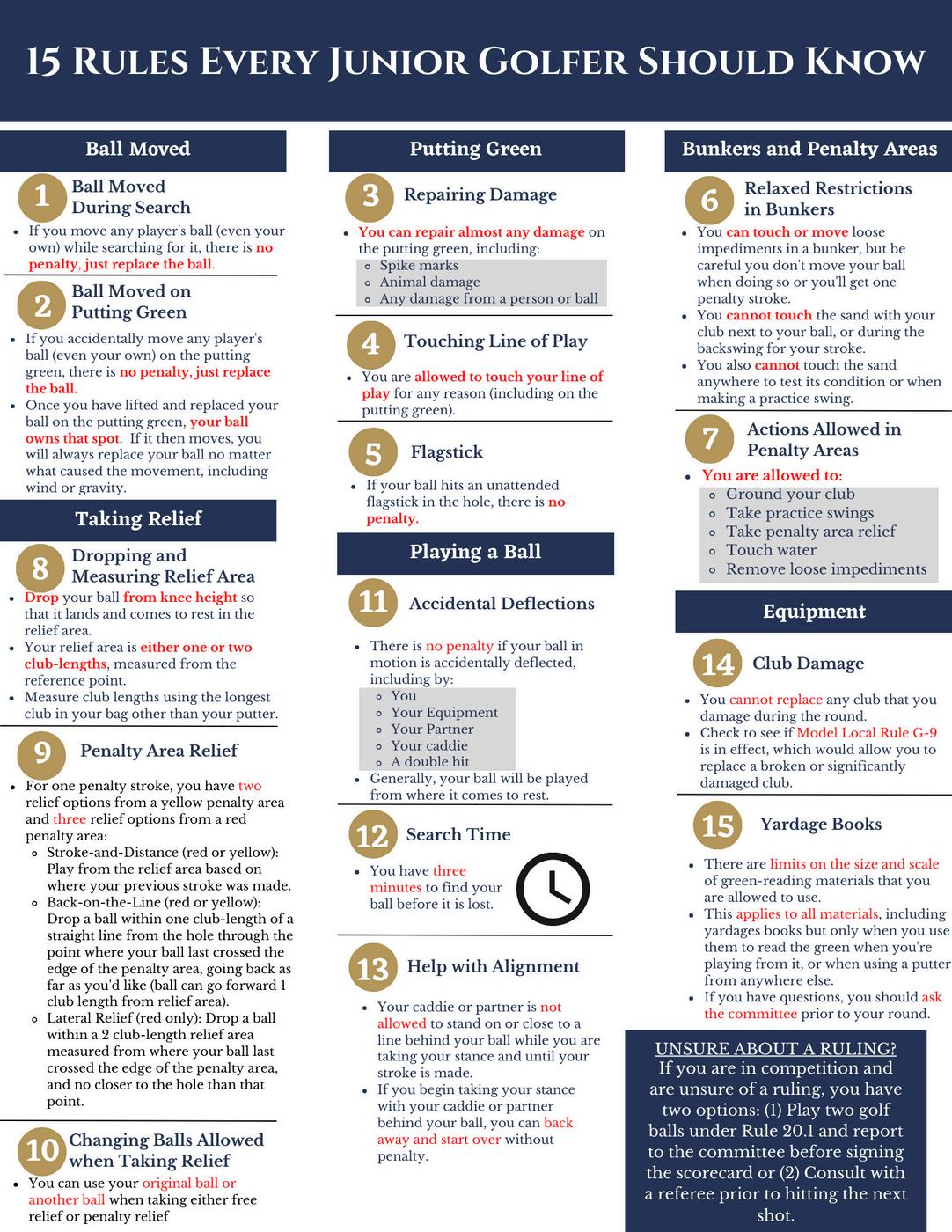
This is a great drill to not only warm up to play great golf, but it will help you feel the right sequence to make power in your swing.
Step 1: In a normal golf posture, put your feet close together with your arms stretched out holding a golf club.
Step 2: Step only with your left leg (if you’re a left handed golfer step with your right leg) a couple times keeping your upper body still Once you get comfortable with that, try and step and then rotate your body into your backswing
Step 3: Then we are going to step, turn to into our backswing, and then rotate right to where we would make impact with the golf ball.
Step, turn away and turn to impact. Repeat this move 10-12 times. This will help you make a great backswing turn and feel the right sequence to make a powerful turn into the golf ball!
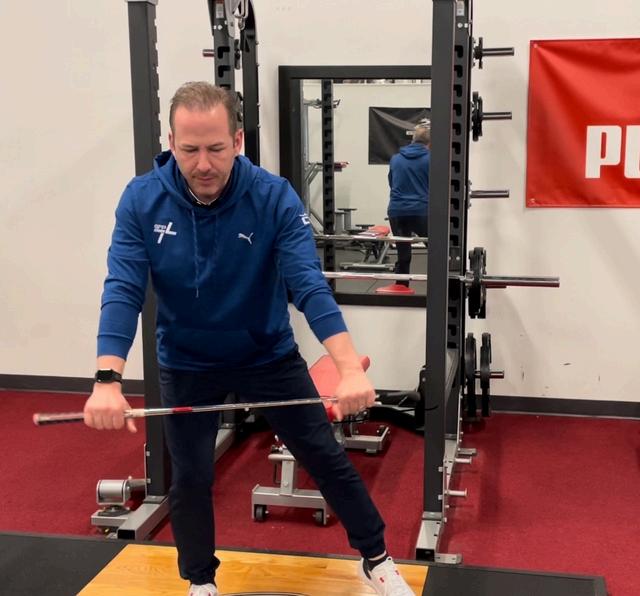



“Do you hit the ball way better on the range than you do on the course? If so, have you ever thought about why?
One of the top 3 mistakes that I see with golfers is how they practice Before we start talking about why or how, lets clarify the difference between “practice” and “warm-up” Most people when they warm-up start with some kind of wedge, then hit some irons, followed by fairways/driver, and then closing with putting and/or chipping That routine might take between 5 and 45 minutes. Generally, you will see a similar, but longer, pattern from Tour players that may include more practice at the beginning and end on short game. There really isn’t a wrong way to warm-up. The important part about “warm-up” is that you activate the golf muscles prior to tee off and try to simulate some of the shots you’ll be hitting during the round
“Practice”, on the other hand, would be defined as dedicated non-playing sessions with the intention to work on your game in whatever capacity you desire. The mistakes that many golfers make during practice is that they don’t “Practice Like They Play.” Have you ever spent an hour on the range hitting driver eventually straightening it out but then your next round, you can’t come close to hitting a fairway? This is a very common problem and also a very frustrating one at the same time Most people when they practice hit 20-30 drivers in a row, which obviously never happens on the course Others drop a few dozen balls next to a practice green and hit chip shots to the same hole location from the same spot giving themselves a good lie every time The icing on the cake for this strategy is that almost everyone hits balls way too fast. Most golfers have some sort of a pre-shot routine on the golf course but rarely, if ever, do that pre-shot routine on the practice range as well.
For the sake of this article, lets assume that there are (5) different golf swings that every golfer needs to be able to execute effectively to play good golf:
Driver Swing, Full Swing with a ball off the ground, Chipping/Pitching, Bunkers/Flops, Putting
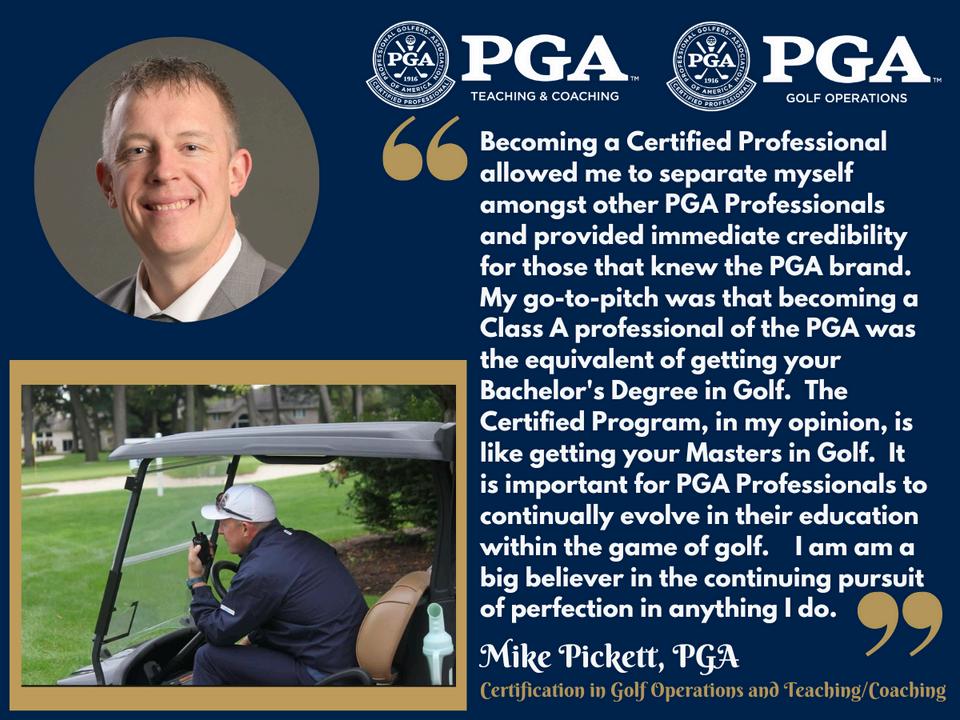
It’s possible that you might need to execute all (5) of these swings over a 13-minute window in just one hole of your round You will rarely ever have to hit more than two drivers in a row and you almost never will have to hit a pitch shot from the same location and the same lie twice in a row. Additionally, you rarely hit more than one shot every two minutes. So why are you hitting 5-6 range balls in a minute??
There are dozens of effective practice techniques that will improve your ability to take your “practice” game to the course. My favorite strategy is to play golf in your head while on the range. This might begin with a standard “warm-up” followed by a simulated first tee shot from any course in the world that you know by heart Take your time hitting shots, playing different shots with different clubs as you play your favorite course in your mind The best players in the world try to play golf as much as possible because they know that practicing different shots will get them more consistent and prepare them as they get into new situations
As a PGA Professional, I feel the pre-shot routine is so important to get your mind ready to hit your golf ball. I want you to develop a routine that you can do before you hit every shot to get yourself ready to hit it. Here’s an example of a pre-shot routine:
I tee up my ball high (for a tee shot)
I like to stand behind the ball and use my club to pick out a target
0 or 1 practice swings depending on the person!
I get myself lined up with feet, knees, hips, shoulders and clubs square
I regrip the club one more time so I’m loose
I make sure I hold my balance after I swing!
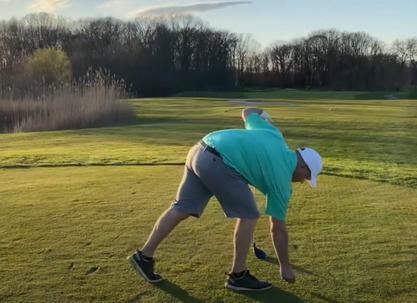
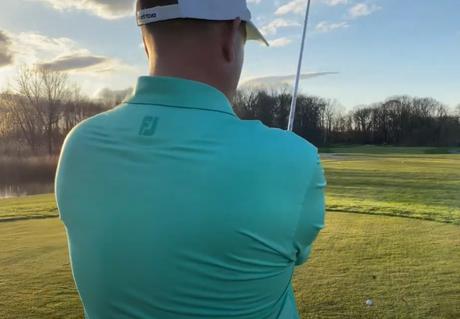
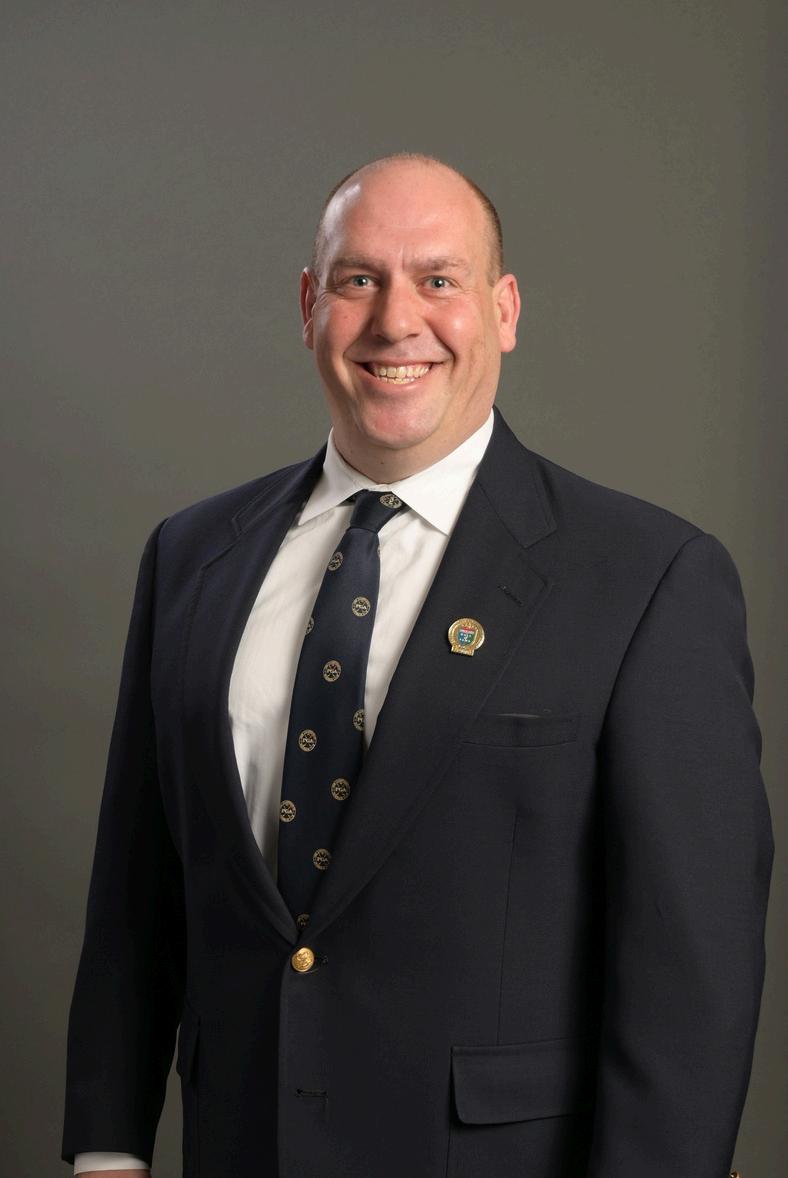
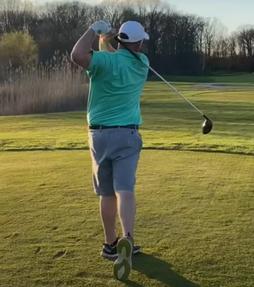
“Why am I so nervous on the first tee?”
This is something that anyone who plays golf can relate to. But is being nervous actually a bad thing? First, we must realize the difference between Nerves and Anxiety
Nerves – blood pumping, juices flowing, readiness, excitement Anxiety – fear of an uncertain future
If you struggle to the point where you are so nervous tha scared to pull the club back, then you are experiencing anxie
Nerves are good. They may feel uncomfortable, but they are Anxiety isn’t necessarily bad, but it definitely hinders your go
When you feel anxiety, your brain reads it as “this is uncom of here ” What happens next? You get out of there as fast scared swing Your brain says “Cha-Ching! We survived t “quick swing” under pressure as a habit. Every time you habitually get quick with your swing.
So how do we battle this mindset? By Acceptance.

Acceptance = seeing things as they are, not how you wish they were
The way out of anxiety is to change the belief. “The future is uncertain and I can’t control it. I can accept the future (no matter where this tee shot goes), so I can sit and operate in the present as is.”
Letting go of control of the future allows control in the present This is the best way to operate when you find yourself feeling anxious going to the first tee.
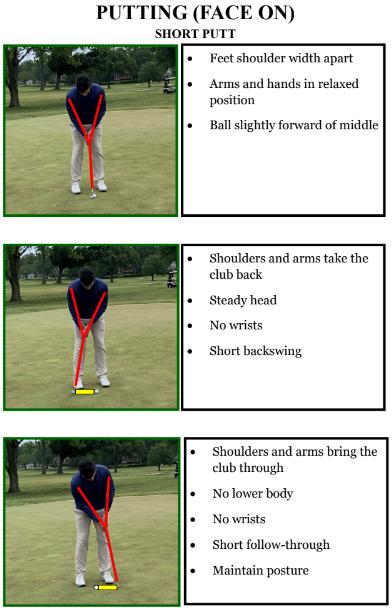


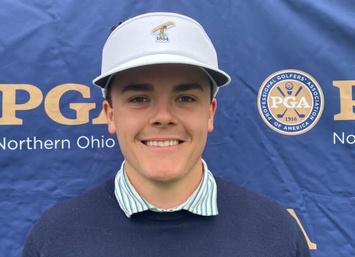
Putting is a key skill in golf that requires focus and precision To start, stand with your feet shoulder-width apart, ensuring a stable base. Keep your arms and hands relaxed, with the ball positioned slightly forward of the middle of your stance. As you prepare to putt, let your shoulders and arms guide the club back smoothly, maintaining a steady head throughout Avoid excessive wrist movement and keep your backswing short and controlled. As you bring the club through, let your shoulders and arms lead the motion, keeping your lower body still Maintain your posture and avoid any extra movement, ensuring a clean and accurate stroke Finish with a short follow-through, emphasizing control and precision in your putt.
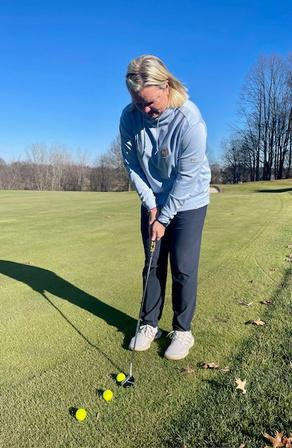
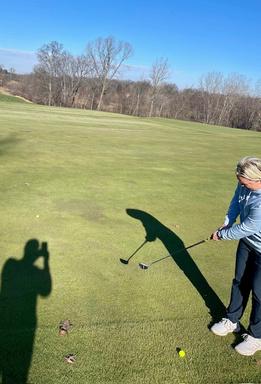
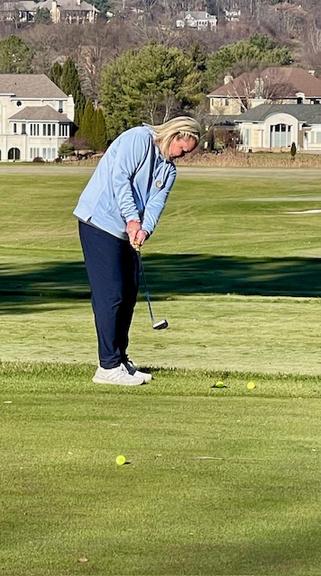

Used prior to play or first activity whe speed of the greens for distance control To learn n area of the practice green that has some slope to i e, but enough that you can feel a slope. Now, take 3 golf balls and find the fringe of the green. Putt 3 balls down the slope trying to stop them on the fringe. Use those same 3 golf balls and practice putting up hill trying to stop them on the same fringe you just putted from. Continue to do this until you find that you are stopping the golf balls on the fringe or very close to it.
This will help you when you are playing different courses, as speed of greens can change from course to course and day to day. Putting can be a very overlooked skill in golf and often not practiced as much as other skills. Make sure to spend time practicing your putting.
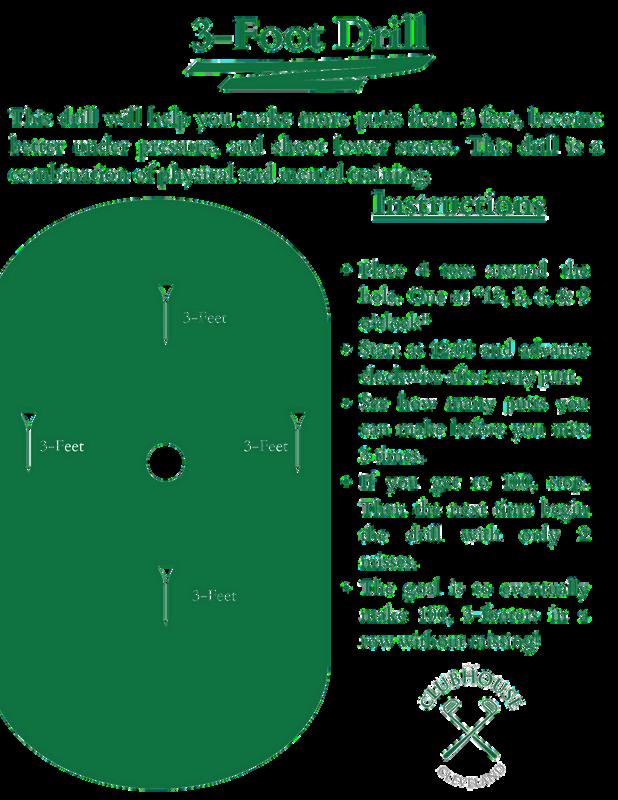

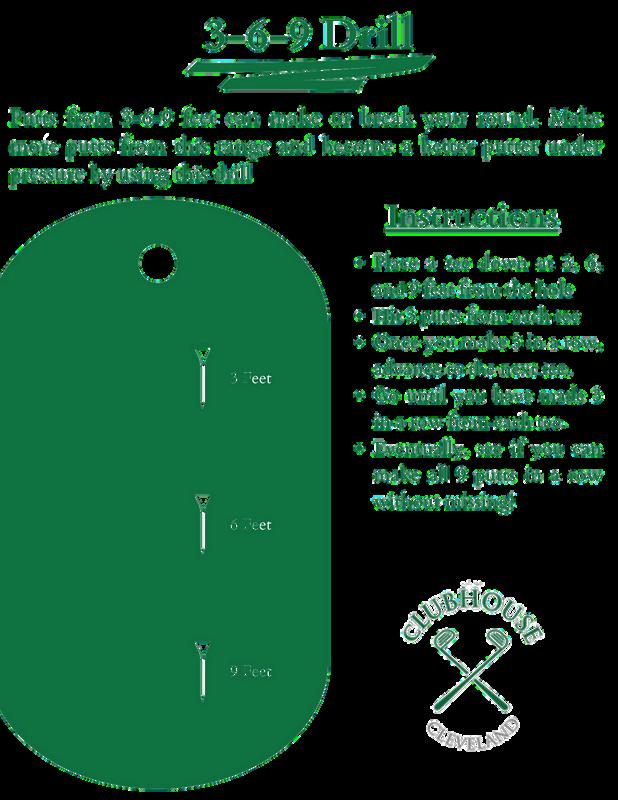
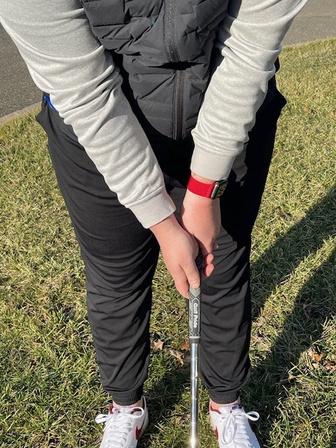
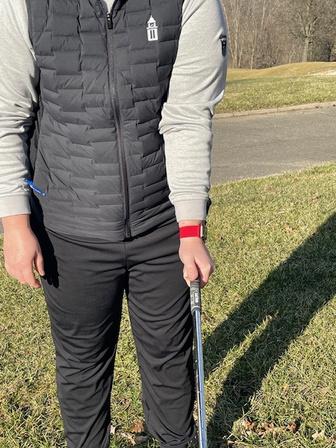
The grip is your only connection to the golf club, so it plays a very important role in the golf swing.
Your grip pressure should feel like you are holding hands with someone or you are holding an opened tube of toothpaste. You don’t want to squeeze the “toothpaste” out of it The proper grip should be held in the fingers. You should also be able to lift the club with your top hand and hinge it at the wrist. See pictures below
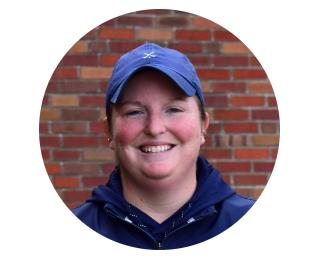
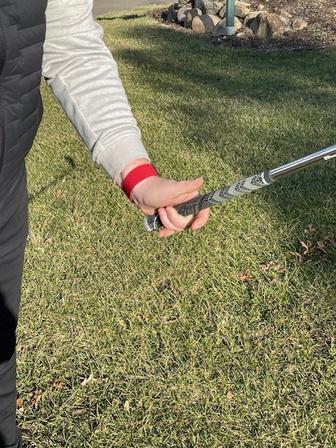
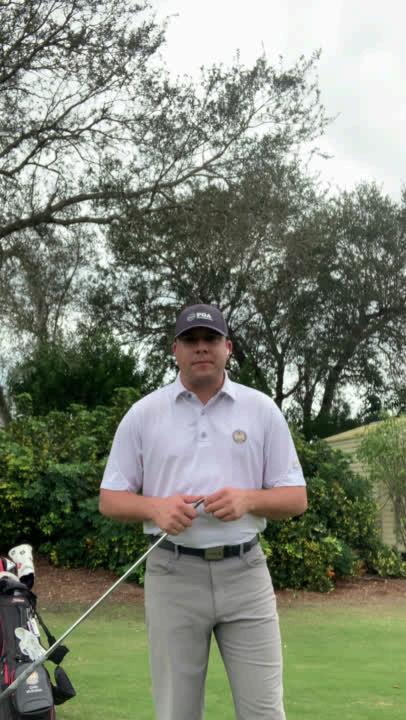
Click here to watch Collin McEndree talk about using Bounce!
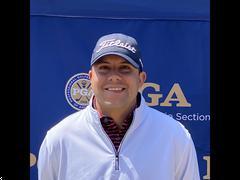
Bounce is the bottom part of your wedge and is measured in degrees. When we set our wedge down on the ground with the shaft vertical, it helps the club bounce off the ground when you hit a chip shot to give you a little more forgiveness when hitting a chip.When you set up, make sure the golf ball is in the middle of your stance with the club shaft pointed at your belly button. We don't want to take the club back further than your waistline. We should always follow through the same distance that we bring the club back!
Grab a Coin!
Let's talk about how to make more solid contact with your chip shots around the green. As a PGA professional, all too often I see players try to lift the golf ball in the air by making the club go upwards. What also can happen is hitting behind the ball. We want to make downward contact on that golf ball
How can you make more solid contact? Take a dime or nickel and place it underneath the golf ball. Take your stance and hit the coin from under the golf ball. It's a simple drill to get you hitting down on the golf ball and will improve your game!
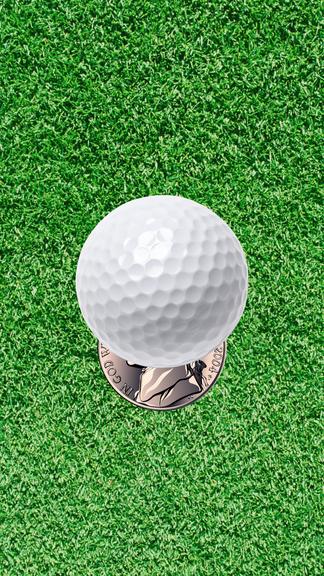
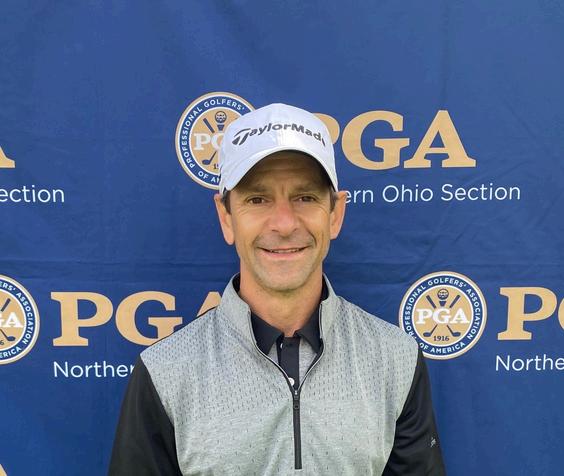
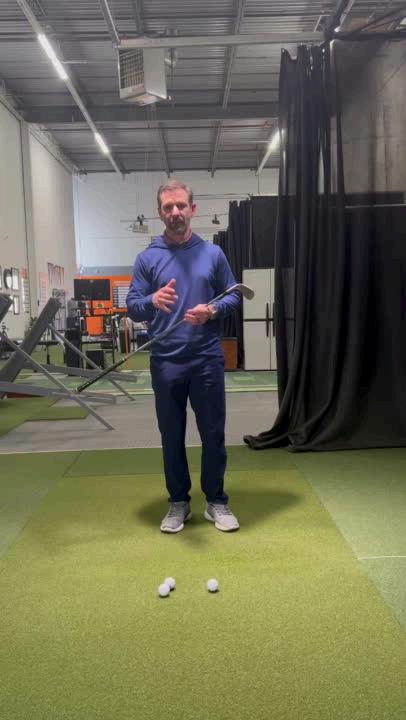
Click here to watch Mark Sierak talk about chipping!
This is called the line drill and you are going to get better at bunker shots with this drill:
#1 Place a line that is going to your target #2 Place a line that is perpendicular to your target line - this will be just behind the ball.
#3 Practice hitting the sand on the line since the line is right behind the ball; the sand gets the ball out!
#4 Focus on swinging out and up to get sand on the green!
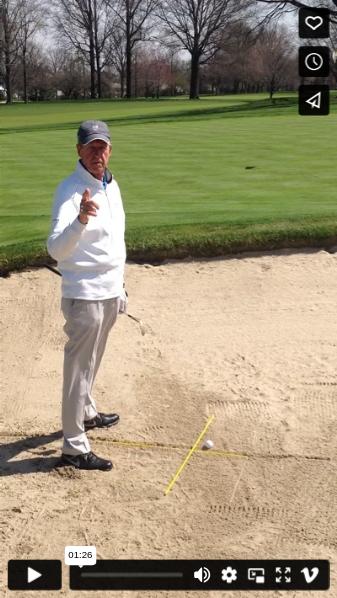 Click here to watch Michael Kernicki talk about the Line Drill!
Click here to watch Michael Kernicki talk about the Line Drill!
One Thing that gets overlooked in the golf swing is the takeaway. Where the clubhead is positioned and where the clubface is pointed early in the backswing will influence how the club moves on the downswing and into the ball. In the photos below, you can see two common takeaway faults and how to fix them.

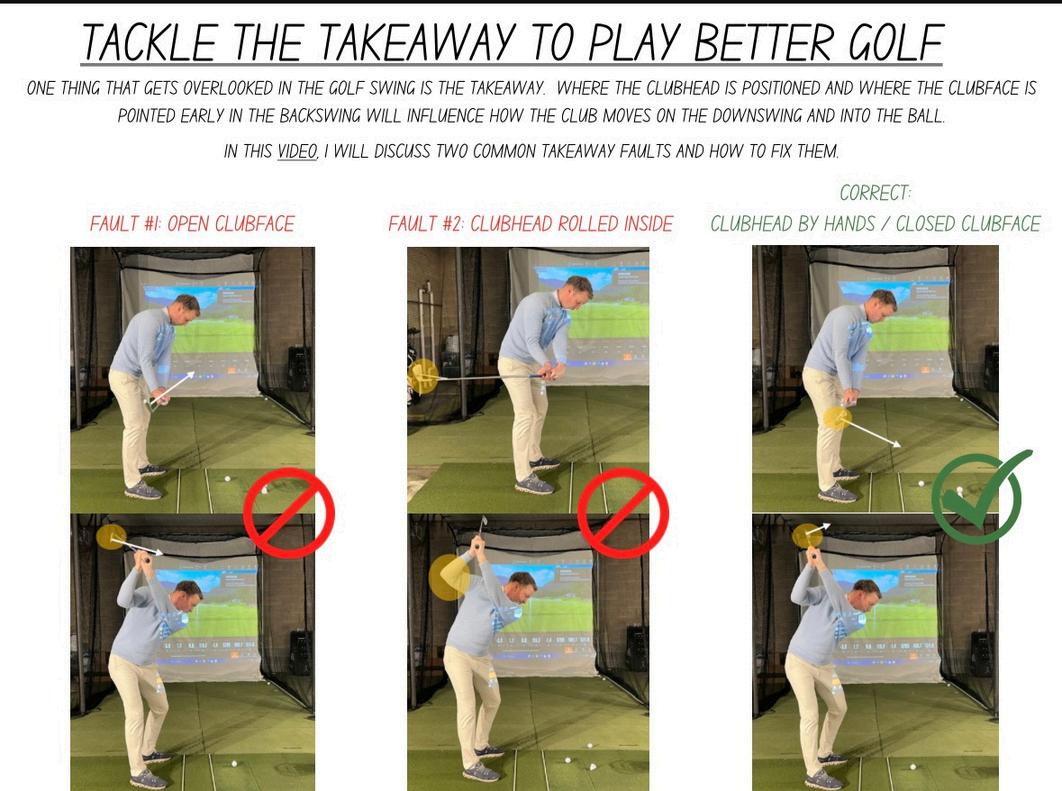
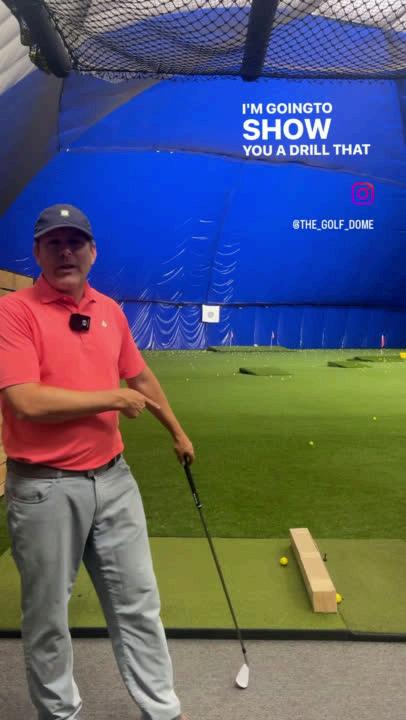
Click here to watch Matt Creech discuss the box drill

This is the Box Drill. As you'll see I've got the golf ball set up about two inches from the box. I've got a long slender box but anything that is somewhat straight would work. And I'm just going to step in and hit shots. With the box, it helps your club path come from the inside and go straight down the target line. The box will give you instant feedback on your club path; maybe don't put anything too valuable inside!

The Drive Chip & Putt Championship is a free, nationwide junior golf development competition for boys and girls ages 7-15, aimed at growing the game Focusing on the three fundamental skills employed in golf, each player gets three attempts in each skill and earns points based on distance and/or accuracy for a total score.

PGA Junior League Golf is a fun, social and inclusive opportunity for boys and girls ages 13 and under to learn and enjoy the game of golf With each team captained by a PGA or LPGA professional, PGA Junior League Golf offers a focus on fun, recreation, good health and sportsmanship.

The Northern Ohio PGA Junior Tour has seen growing interest in our Membership for more 36Hole Championships to not only prepare Juniors for College golf, but also to help Juniors to be noticed by College Coaches without having the financial burden of travel golf All players registered will compete in an overall division: Boys 11-19 and Girls 11-19 All Boys will play from the same tee and all girls will play from the same tee.
**Financial Assistance is offered to NOPGA Junior Tour members who may be unable to afford membership or tournament fees.**

The Northern Ohio PGA welcomes players between the ages of 8-15 years old to participate in our 9-hole Futures Tour Program! The Futures Tour was created as a way to give Young Golfers the ability to see what Tournament Golf is like in a fun environment. Parents and family members are permitted to caddie for their junior in order to assist in the round.

The Northern Ohio PGA Junior Tour is a group of tournaments for boys and girls ages 11-19. The tournaments are held at some of the premier golf facilities in Northern Ohio. These events are designed to offer juniors of all skill levels the opportunity to compete and enjoy learning how to handle the competition of tournament play.
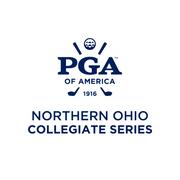
The Northern Ohio PGA Collegiate Series is a series of tournaments designed for young men and young women ages 18-22 These events are designed to provide preparation for the college golf experience by conducting tournaments on more challenging golf courses and offering a higher level of competition
If you have any questions regarding the Northern Ohio PGA Section Foundation, NOPGA Junior Tour, Drive Chip & Putt, PGA Jr League, or any other program discussed on the previous pages, please reach out to us at the contact information below. If you are interested in taking a lesson with a PGA Professional, head to PGA.Coach and search for a professional in your area!
Phone
(216) 765-1214
dmonas@pgahq com
